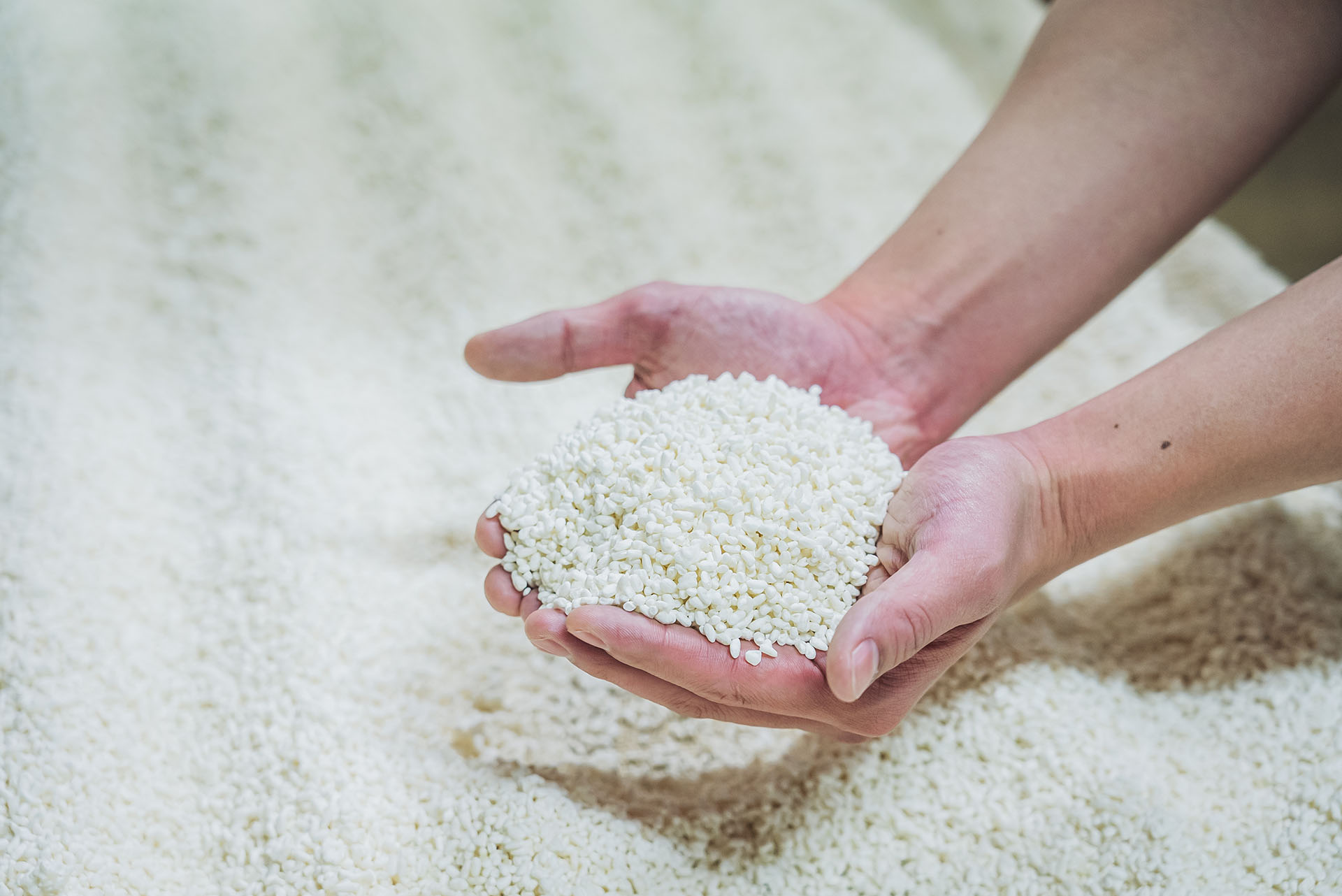This is how UMENISHIKI is made
-
1Rice polishing
-
Needless to say that rice suitable for sake brewing is used, but the “rice polishing” technique, which removes proteins and fats that cause off-flavors from brown rice, is also an important factor of brewing delicious sake. When rice is polished, then the temperature of the rice increases and it dries. If rice is soaked in water while it is still dry, the rice is broken because they rapidly absorb water. To prevent this, we adjust the amount of water of the rice by leaving the polished rice there. This is called "withering". It returns the rice to an appropriate level of the amount of water to to prevent it from curling. It is said that to check timing is very difficult.
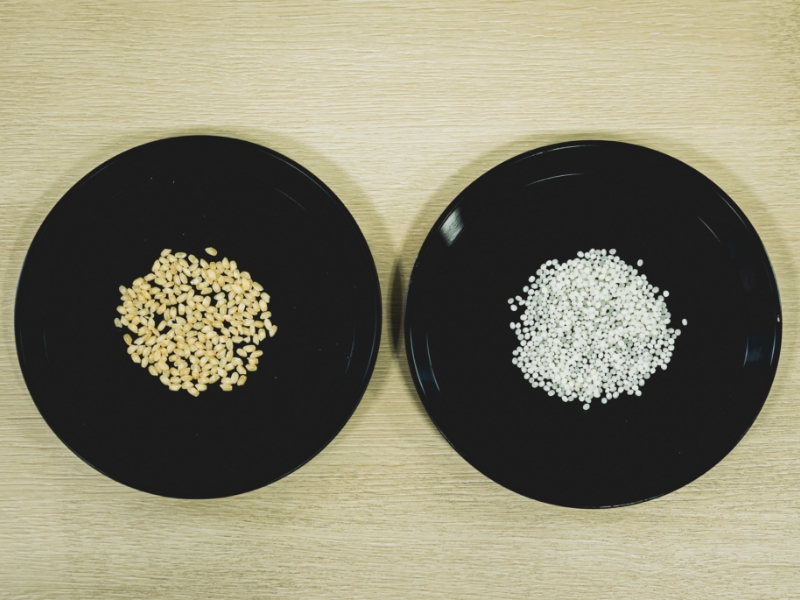
-
2Washing・Steeping
-
The rice is washed by using in-house well water for a certain period of time. The purpose of washing is to remove rice bran and dirt stuck of the rice. We wash the rice using our improved showers at UMENISHIKI. Water absorption varies depending on the quality of sake rice that year. The brewer carefully adjusts the rice washing and soaking times to achieve the appropriate water absorption rate to produce the best steamed rice. Right after soaking and absorbing water, the outside of polished rice contains a lot of water. During draining, the water permeates towards the centre of the white rice, resulting in white rice with even moisture content.
-
3Steaming
-
After the washed and soaked rice is drained, it is replaced in UMENISHIKI's original “Koshiki” and steamed by blowing up steam from the bottom. By using our original Koshiki, we can make fine adjustments to the steaming process. It is said that high-quality steamed rice has a moderate hardness and elastic texture (hard on the outside and soft on the inside). The brewer picks up a small amount of steamed rice and judges the degree of steaming by feeling the palm of his hand and the texture. This is the process that greatly affects the finished product, and is where the experience and skills of the brewer play the important rolls.
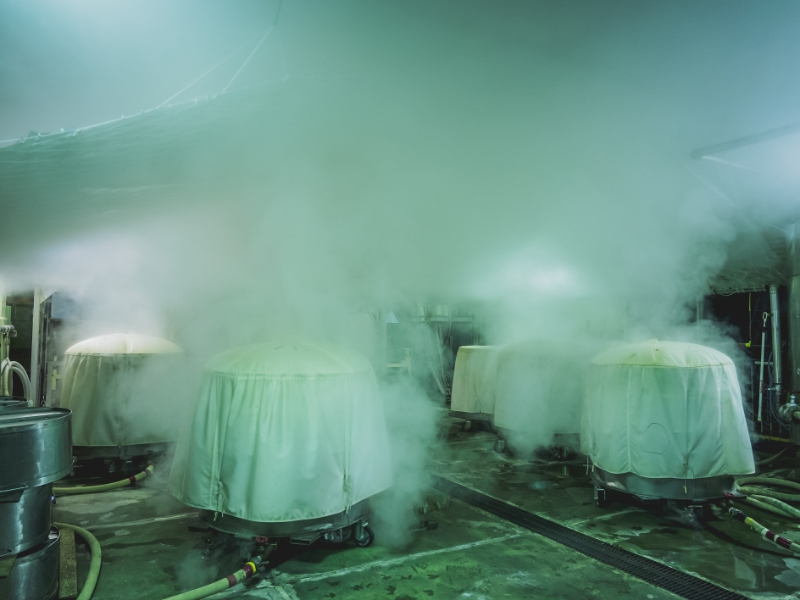
-
4Koji (Mold)
-
In UMENISHIKI, the koji-making process takes place in three koji rooms. Seed koji is sprinkled on steamed rice, and the temperature and humidity are carefully controlled to facilitate the growth of koji mold. The completed koji plays a crucial role in the fermentation process of moromi (fermented mash), converting the starch in rice into sugar. Yeast then utilises this sugar for alcohol fermentation. The brewery director oversees the koji-making process, adapting to subtle changes in factors such as the aroma of the koji and the state of koji mold growth.
UMENISHIKI uses traditional methods such as using a one-sho-sized koji lid for some of its Daiginjo-sake, and also employs machine-assisted koji making. While there is a saying in sake brewing, "One Koji, Two Shubo, Three Brewing," it is not an exaggeration to say that koji making is the most crucial stage in the sake-making process.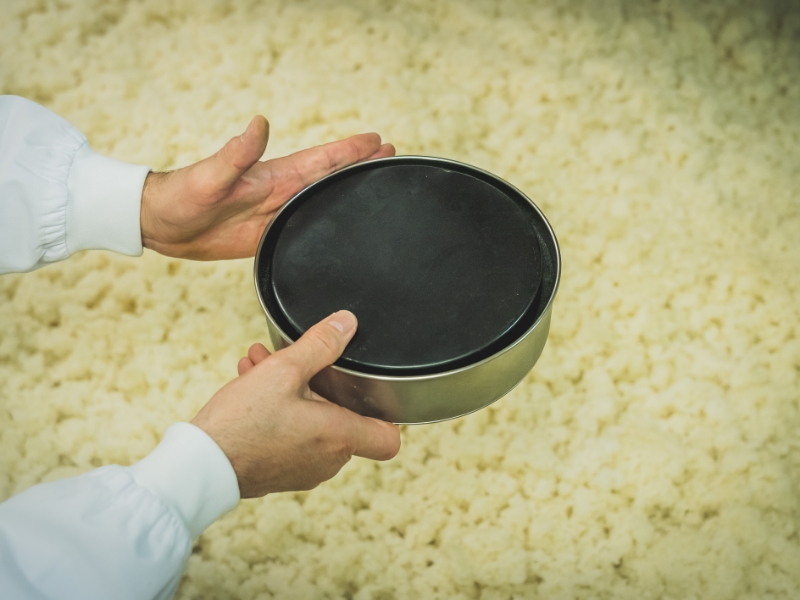
-
5Moto (Yeast Starter)
-
Next is the expansion and cultivation of yeast, known as "shubo" making. Steamed rice and koji are added to water, gradually increasing the temperature. The pH is lowered to acidity through the action of lactic acid, suppressing bacteria and allowing the yeast to be cultivated in a pure form. In our brewery, we use both "sokujo moto" (quick fermentation starter) and "koutanka moto" (high-temperature saccharification starter).
・Sokujo Moto (Quick Fermentation Starter): Refers to a fermentation starter that uses artificial lactic acid. It takes approximately two weeks.
・Koutanba Moto (High-Temperature Saccharification Starter): This process involves brewing at high temperatures, facilitating rapid saccharification and eliminating bacteria. It takes about one week.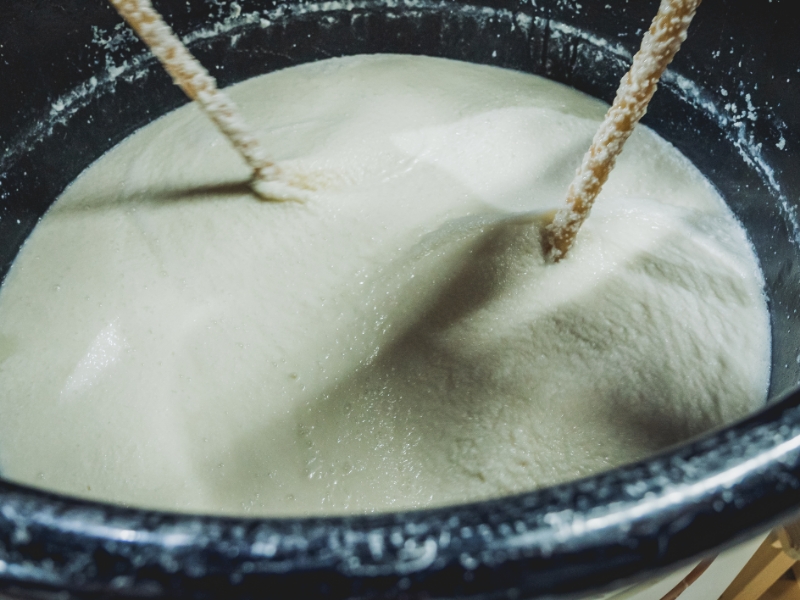
-
6Moromi (Fermented Mash)
-
In large tanks, we conduct the brewing process by adding steamed rice, koji rice, and water to the shubo (fermentation starter). To prevent a decrease in yeast density and a decrease in lactic acid concentration, which could lead to the risk of bacterial contamination, we follow a three-stage process known as "sandangi-shikomi," gradually increasing the volume over three stages rather than mixing the entire amount at once.
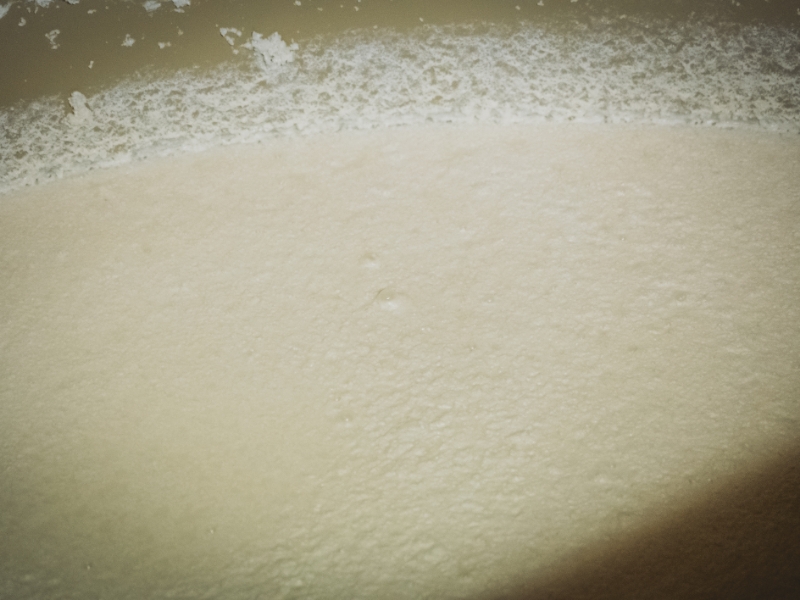
-
7Jōsō (Pressing)
-
Jōsō is the process of separating the moromi into sake kasu (lees) and liquid. In addition to the efficient method of using an automatic press, there is also the traditional method of "fukuro-tsuri" (bag hanging). In fukuro-tsuri, the moromi is placed in a special cloth bag and hung, allowing droplets to naturally fall due to gravity, which are then collected. While this method requires more time and effort, it results in a sake without impurities. After pressing, the new sake is left at a low temperature for a certain period, and then undergoes filtration to remove sediments that could cause cloudiness.
-
8 Hiire (Pasteurisation)
-
Freshly brewed sake, known as "namazake" (unpasteurised sake), is a living entity. Due to the presence of active yeast and microorganisms, if left untreated, it can undergo excessive fermentation, compromising its flavour, aroma, and clarity. To address this, the process of "hiire" (pasteurization) is employed. Hiire involves heating the sake to kill microorganisms, creating a stable aging environment. This not only stabilises the sake quality but also allows for long-term storage without the need for preservatives. This practice reflects the wisdom passed down from our predecessors since the Edo period.
However, there are also types of sake that are left unpasteurised and stored at low temperatures without filtration or pasteurisation. While sake without pasteurisation is delicate and challenging to distribute and store, it has gained popularity for its unique and vibrant aroma, as well as its fresh taste. -
9 Chozo (Storage)
-
Once the pasteurization process is complete, the sake is stored in tanks. Maintaining a consistent cooling temperature, it is carefully stored for several months to about a year, allowing it to undergo a slow and deliberate aging process. There are various storage methods, such as storing in tanks or bottling and storing in bottles. However, proper temperature management is crucial, as excessive warmth can lead to over-aging.
During the storage period in tanks before bottling, the fresh and robust characteristics of the new sake gradually settle, and the flavour and aroma evolve into a rounded and mellow quality.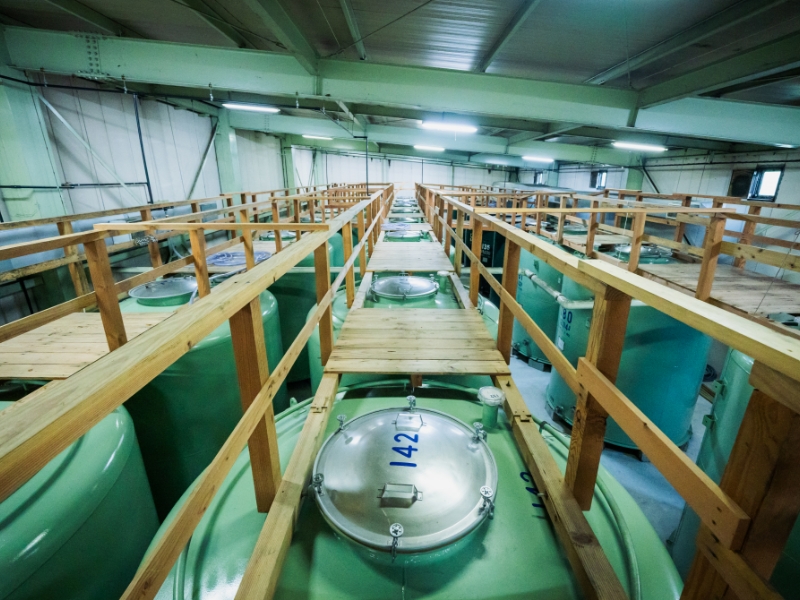
-
10Blending
-
To achieve the distinctive characteristics of each sake brand, sake is tasted, and adjustments are made to its color, aroma, and flavor. Before bottling, brewing water is added to the sake to soften its intensity and bring the alcohol content to the specified standard. Through blending, filtration, and dilution, each brand is crafted to achieve a consistent and stable flavor, meeting the desired qualities of the product.
For sake labeled as "genshu" (undiluted sake), no brewing water is added, resulting in an alcohol content of 18% or higher. Genshu often possesses a rich and aromatic flavor profile. -
11Bottling
-
The bottling process includes filling bottles as well as paper packs and small cups with sake. Automatic bottling machines are used to connect and carry out each step of the bottling process continuously. These machines can reach a capacity of up to 6000 bottles per hour for 1.8L bottles. When the filling process is done manually, it is referred to as "Tezume" (hand-bottling), which is typically done for bottles with unique shapes or when the bottling quantity is low.
After bottling, the products undergo inspection for taste, defects, and foreign particles. This inspection, called "kenbin" (bottle inspection), involves a visual examination of each bottle. Subsequently, product labels are applied.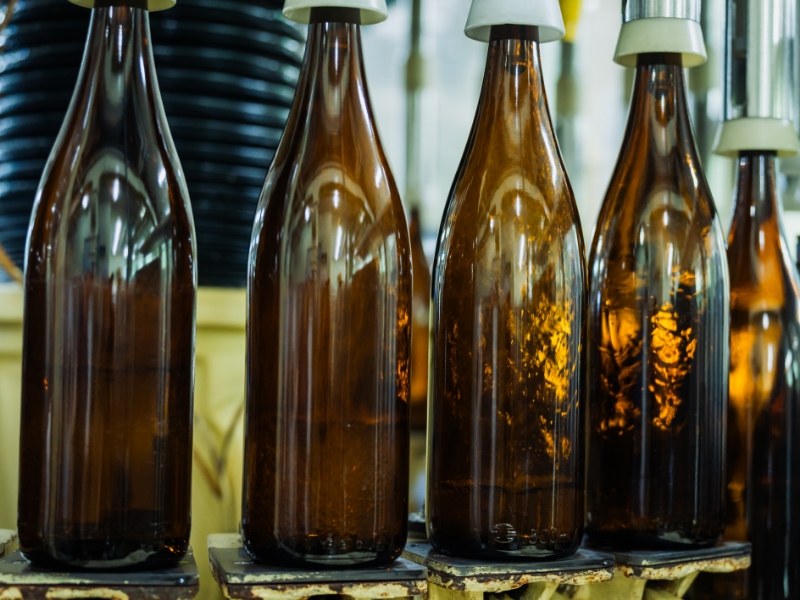
-
 Carefully selected raw materials
Carefully selected raw materialsThe primary ingredient of Japanese sake is rice. The rice is a very important element and it is not too much to say the taste depends on the for sake used rice. While there are various varieties of rice suitable for sake brewing, those with large grains, low fat and protein content, and good water absorption are considered optimal. UMENISHIKI uses over 10 renowned varieties of sake rice, including "YAMADA NISHIKI," "HAKUTSURU NISHIKI," "OMACHI," and others, each known for its exceptional quality. These rice varieties are used individually or blended to craft a diverse range of Japanese sake.
Even within the same rice variety, differences in climate at the production region lead to distinct characteristics, influencing both the brewing process and the resulting flavour of the sake. The accumulation of extensive knowledge and expertise allows UMENISHIKI to "masterfully utilise" various sake rice varieties, creating a rich tapestry of sake with nuanced flavours. -
 Abundant Underground Water Flowing from the Ishizuchi Mountain Range
Abundant Underground Water Flowing from the Ishizuchi Mountain RangeThe Ishizuchi mountain range, centred around the highest peak in Western Japan, Mt. Ishizuchi, is the backdrop for the sake brewery of UMENISHIKI. In various processes such as washing and steaming rice, the brewery utilises the underground water that originates from this prominent peak.
The underground water from the Ishizuchi mountain range has a short distance from the infiltration zone to the self-spouting area. Due to the brief time spent underground, components that negatively affect the taste of water are less likely to dissolve, resulting in soft water without distinct characteristics. This delicious water, with a gentle sweetness and low levels of calcium and magnesium, is truly a miraculous flavour nurtured by the natural surroundings and terrain of this region. While the brewery draws water from on-site wells, the continuous flow of this underground water never ceases and remains clear without stagnation. The ideal conditions created by the blessings of the Ishizuchi mountain range have undoubtedly played a crucial role in the birth of UMENISHIKI, a sake perfectly suited for the marine delicacies harvested from the Hiuchinada tidal flats. -
 Turning sake brewing into a tool to fully utilise human sensitivity
Turning sake brewing into a tool to fully utilise human sensitivitySince 1987, starting with the raw material processing plant, we have been modernising all facilities. For instance, the task of turning over approximately 700 kilograms of steamed rice using a shovel can be streamlined by using a forklift, allowing human effort to be redirected to other tasks.
Creating an environment where the brewing master, who holds the authority over taste decisions, can focus on their work directly contributes to maintaining a high quality of sake. The sake at UMENISHIKI is crafted through meticulous handwork involving the experiences and senses of the brewing master—seeing, touching, assessing temperature and texture, smelling, and tasting. This hands-on approach has been passed down since the establishment of UMENISHIKI's sake brewing by the renowned master of the Showa era, Fukuhira YAMANE (a contemporary master), and his mentor Takaji ASE, and it continues to be cherished to this day.

